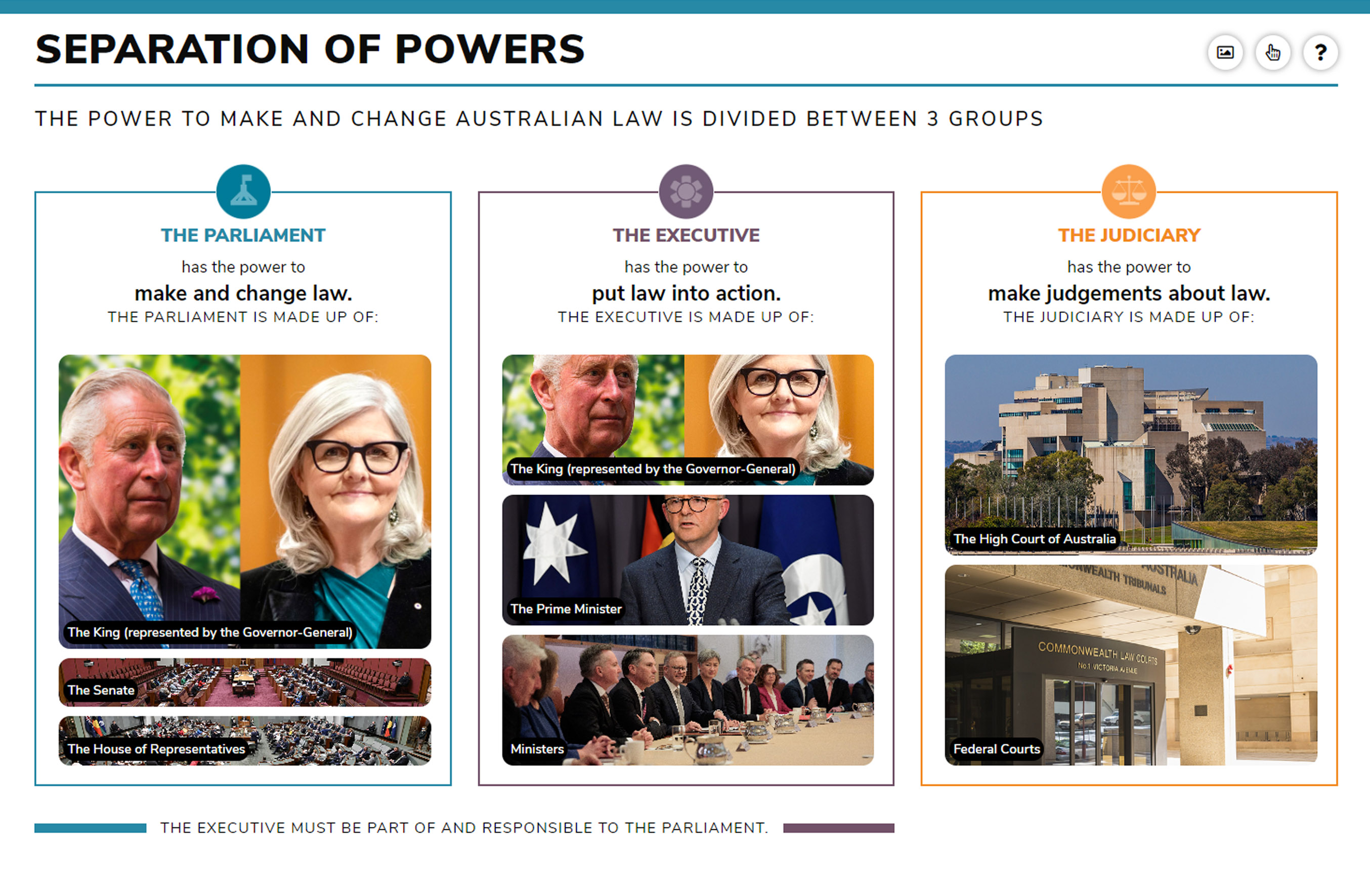Separation of powers
Explore the separation of powers with your class with this interactive poster. Use the teaching notes and activities to support your students' learning.
Teaching notes and activities
Curriculum links
Year 6: ACHASSK143
Year 7: ACHCK048
Year 9: ACHCK103
Before you begin
Read through the Australian system of government and Separation of powers: Parliament, Executive and Judiciary fact sheets and The Australian Constitution in focus paper. These resources will prepare you to explore the Separation of powers interactive poster with your class and answer your students’ questions.
Getting started
These discussion starters are listed from easier to more complex. Choose the ones that work best for your class.
- In Australia, the power to make and manage law is divided between which 3 groups?
- Who makes up each of the 3 groups?
- Australia does not have a complete separation of powers. Look at the 3 groups shown on the poster. Which groups are connected? Which people are in more than one group?
- Why is it important to divide the power to make and manage law between different groups? What could happen if we didn’t have this system?
Activities
Sharing power at school activity
The following activity encourages students to think about how power and responsibility are shared at their school.
- In small groups students complete a table that outlines the powers and responsibilities of different groups. A sample table is below:
|
Group 1: Leadership staff |
Group 2: Teaching staff |
Group 3: Student leaders |
|
Key people: What powers do they have? What are their responsibilities? |
Key people: What powers do they have? What are their responsibilities? |
Key people: What powers do they have? What are their responsibilities? |
- After completing the table, discuss the following as a class:
- How are disagreements at school resolved?
- Are the 3 groups working towards a common goal. If so, what is this common goal?
- Can students identify any similarities or differences between their school structure and the separation of powers in Australia?
- Are there any other groups in your school who have powers or responsibilities?
Separation of powers scenario extension activity for older students
The Separation of powers creates a system of ‘checks and balances’, ensuring that no group becomes too powerful. Consider the examples below. In each case, explain which group is acting as a check on the power of which other group:
- The High Court finds the actions of a minister unlawful.
- The Australian Parliament passes a law that overrides a decision made by the courts.
- The Senate questions ministers about how Australia’s money is being spent.
- A law made by the Australian Parliament is struck down by the High Court because it is unconstitutional.
- During Question Time in the Senate and the House of Representatives the opposition and the crossbench ask the government to explain its actions and decisions.
Reflection
After looking at the interactive poster and completing some of the activities, discuss this question with your class:
- In Australia, the Executive must be part of and responsible to the Parliament. This is the principle of responsible government. It is different from the United States system of government in which the Executive (headed by the President) is separate from the Congress (the United States parliament). What advantages or disadvantages can you see in either system?
